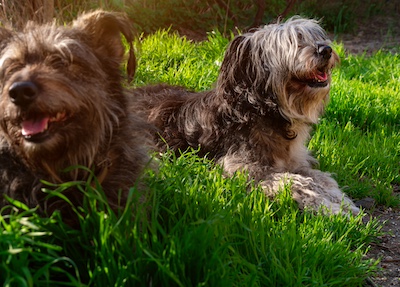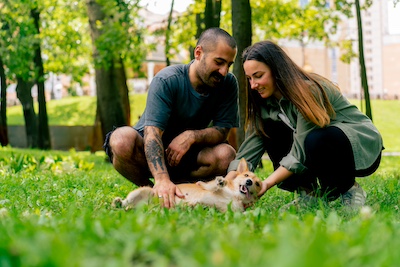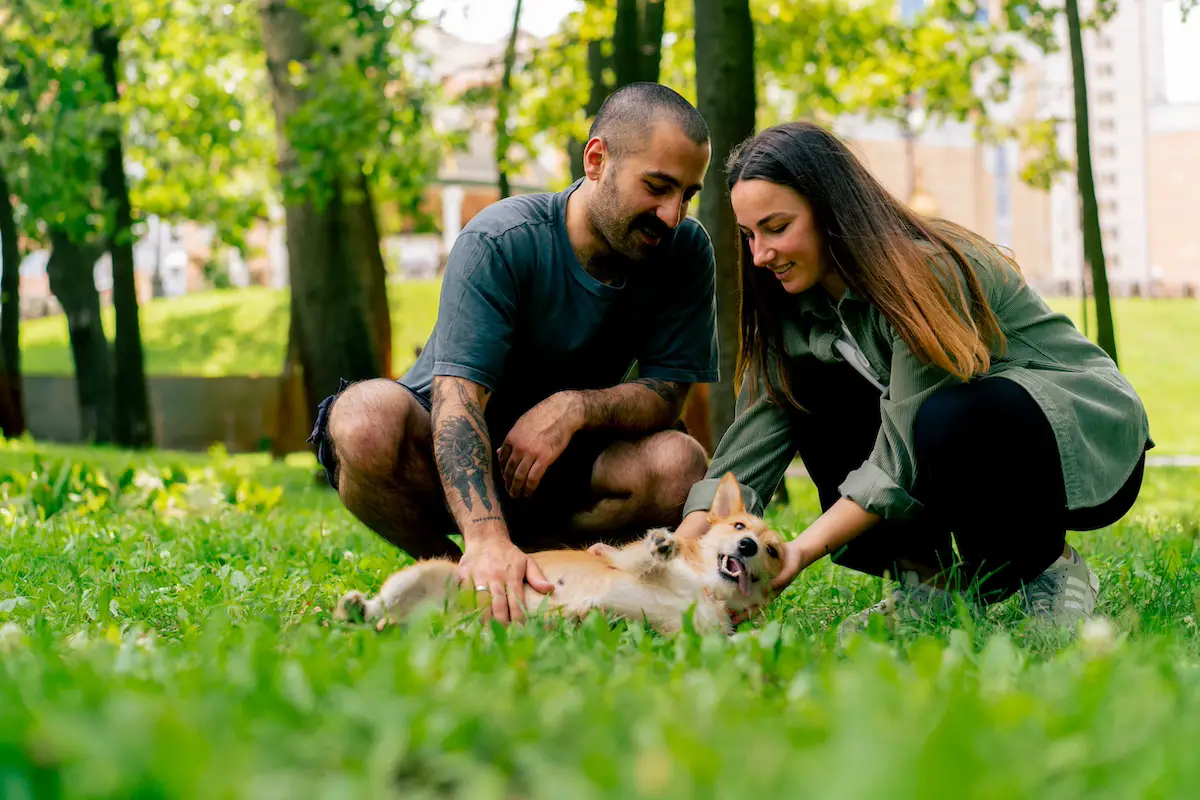Maintaining a lush, green lawn while keeping our pets safe requires a careful selection of pet-friendly lawn care treatments. This guide provides practical advice for achieving a yard that both you and your pets can enjoy.
Choosing Pet-Friendly Lawn Care Treatments
When treating our lawns for weeds and pests, pet owners must ensure their furry friends stay safe. Choosing the right products and applying them properly can help maintain a healthy lawn without risking pets’ well-being. Here are some tips:
- Choose pet-friendly products and read labels carefully. Natural or organic options can be safer, but remember that natural doesn’t always mean non-toxic. Keep pets off the lawn until the treatment has dried or as instructed on the label.
- Consider physical removal for weeds using tools like weeding forks or your hands. It’s hard work but safe for everyone.
- Apply treatments during cooler parts of the day to ensure quicker drying times, reducing the chance of your pet coming into contact with wet treatments. Monitor the weather, as rain can wash away treatments and create puddles of contaminated water.
- Water your lawn before treatment to enhance absorption and minimize runoff. After the safe period has passed, watering can help dilute any residues.
- Keep your pets entertained indoors on treatment day to give your lawn time to absorb the treatments safely.
By following these tips, you can enjoy a well-maintained lawn without compromising your pets’ health and safety. It’s about making smart choices and taking extra steps to ensure treatments do more good than harm.

Natural Pet-Friendly Lawn Care Weed Control Techniques
To preserve our garden’s and pets’ health, let’s explore adjusting our lawn care strategies, using natural methods, and ensuring our furry friends can play safely.
- Spot treat instead of broad application when battling stubborn weeds. This reduces the spread of chemicals and allows pets to enjoy most of the lawn unaffected.
- Use temporary fencing or barriers for areas undergoing treatment or delicate sections of your garden. This protects your efforts from playful paws and keeps pets away from freshly treated spots.
- Foster a robust lawn through natural boosters. Aerating the soil encourages healthy growth, making it harder for weeds to establish. Overseed to introduce more grass seeds, naturally crowding out weeds without chemicals.
- Certain weeds are harmless to pets and can contribute positively to your backyard’s ecosystem. Research and embrace these species as natural, low-maintenance groundcover.
- Keep a vigilant eye on your garden with regular checks to catch potential issues early, reducing the need for drastic chemical interventions.
By thoughtfully adjusting how we care for our green spaces, we create a safe, vibrant outdoor haven for everyone to enjoy.
Preventative Pet-Friendly Lawn Care Practices
To harmonize pet safety and lawn health, consider these additional strategies:
- Conduct a soil test to avoid unnecessary or harmful treatments. Balanced soil fosters strong plants that are more resistant to weeds and pests.
- Overseed sparse lawns to help your grass outcompete weeds naturally. Choose a durable, dense-growing grass type suitable for your climate and soil.
- Keep your lawn at an optimal height to support healthy grass and discourage weed growth. Regular mowing with a catcher prevents weeds from seeding and spreading.
- Aerate your lawn to enhance air, water, and nutrient flow. A sturdy lawn is your best defense against weeds, reducing the need for chemical control.
- Use organic mulches in garden beds adjacent to your lawn to suppress weed germination and growth. Ensure the mulch is free from cocoa bean shells, which are harmful to dogs if ingested1.
- Encourage certain “friendly” weeds that are harmless and can coexist with pets and plants. Some, like clover, add nitrogen to the soil, promoting grass health.
- When treatment is necessary, choose early mornings or late evenings when pets are less likely to be outdoors.
- Commit to regular lawn inspection and gentle grooming to catch and address issues before they become major problems.
These strategies focus on prevention and natural care, allowing our pets safer frolics in the grass while fostering a thick, healthy lawn that naturally repels weeds.

Creating a Pet-Friendly Lawn Care Routine
Maintaining a beautiful lawn while prioritizing our pets’ well-being is achievable. Opting for pet-friendly products and natural weed control methods contributes to a safer environment for our four-legged friends and promotes a healthier backyard ecosystem. Creating a safe outdoor haven where pets can play freely is a rewarding aspect of thoughtful lawn care.
- Cortinovis C, Caloni F. Household food items toxic to dogs and cats. Front Vet Sci. 2016;3:26.

